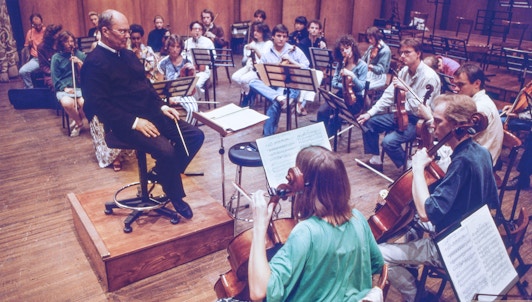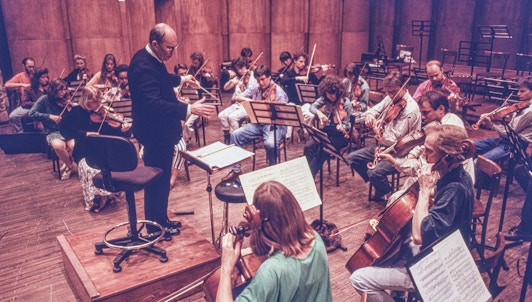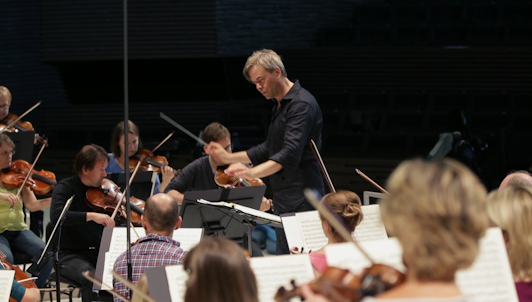At fifty, Sibelius had nearly attained the status of national hero in Finland. In his first four symphonies, he had amply demonstrated his mastery of European symphonic techniques—all inflected by his personal idiom, a singular and poignant music that seemed capable of uniting his country under an identity separate from a long history of social, cultural, and military domination by Sweden and then by Russia. The Finnish government declared Sibelius's 50th birthday (December 8, 1915) a national holiday, and the work they commissioned from him to mark the occasion would prove to be among the greatest symphonies ever composed. Sibelius's monumental Fifth Symphony is a celebration of life itself, a paean to nature, and an ode to the transformative power of unity: "It is as if God Almighty," the composer wrote, "had thrown down pieces of a mosaic for heaven's floor and asked me to find out what was the original pattern."
A moment to listen for in… Sibelius’s Fifth Symphony: The famous "swan theme" at 25:00, inspired by a chance encounter. “Today at ten to eleven I saw 16 swans. They circled over me for a long time. Disappeared into the solar haze like a gleaming silver ribbon. Their call the same woodwind type as that of cranes, but without tremolo. The swan-call closer to the trumpet … Nature’s mysticism and life’s angst! The Fifth Symphony’s finale theme: legato in the trumpets!” — Jean Sibelius, April 21, 1915.

The legendary 1998 cycle of Sibelius's symphonies

The legendary 1998 cycle of Sibelius's symphonies
